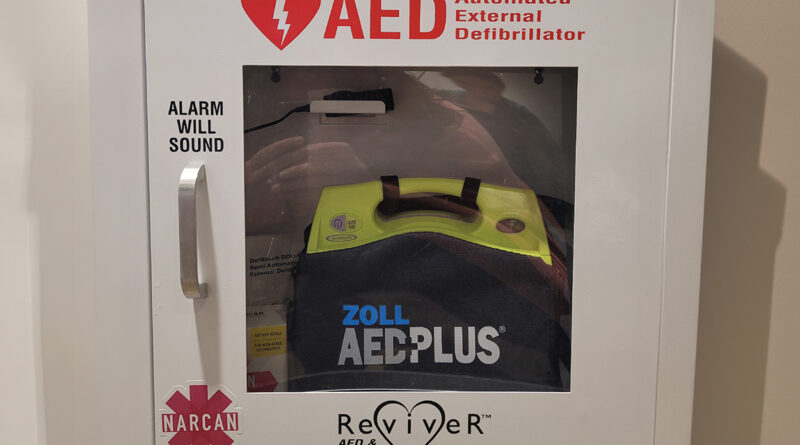What to know about UD’s Narcan addition
James Tong | Opinions Editor
The University of Dayton has implemented a campuswide opioid overdose resource through the addition of Narcans in 28 buildings, to the 33 alarmed AED+ Life-Saving cabinets that already existed across UD’s campus. These specific cabinets are highlighted by a decal, conveying they possess a Narcan.
Narcan, the brand name for naloxone, is FDA approved and categorized as an opioid antagonist, naloxone is a crucial medication that has life-saving potential with the ability to reverse an opioid overdose, including those caused by fentanyl, heroin or prescribed opioids to name a few. Naloxone works by attaching to opioid receptors then reverses and blocks the activation of said receptors to the central or peripheral nervous systems. In other words, it blocks the effects of opioids on the brain and allows for the victim to quickly restore their normal breathing.
UD EMS and Center for Alcohol and Other Drugs Resources and Education (CADRE) have begun training called Recognize Opioid Overdose and Response (ROAR). The ROAR training aims to educate students, staff and faculty on opioids and the signs and symptoms of an overdose as well as the proper administration of the Narcan. ROAR training began on September 10, the next training will be announced shortly.
“We appreciate every campus administrator, partner and student leader who made this training possible,” said CADRE director ,Vernique Coleman-Stokes. “Their effort sends a clear and powerful message of the value placed on health, safety and wellbeing. We are eager to see how this health initiative makes a lasting impact on our campus community.”
The recent opioid epidemic has had a presence in the region around UD. The gravity of this epidemic made headlines on the campus of The Ohio State University in 2022 when two OSU students died due to fentanyl overdoses after they ingested what they believed to be a generic form of Adderall, a stimulant that’s most commonly used to treat attention deficit hyperactivity disorder (ADHD). It was later reported in the toxicology report that showed that both students had fentanyl in their system, thought to be from laced Adderall. College students have also been known to use the drug as a means to keep them awake and enhance their focus.
The epidemic came to UD’s campus last year, when the university made headlines last February. Four people (two students and two non-students) had to be treated for an apparent overdose in Campus South, three of which were taken to the local hospital while one was treated on the scene.
UD EMS has been carrying naloxone for years, with the recent addition of the Narcan to the cabinets mentioned above, students and staff are now given the opportunity to help save others.
“As a volunteer, student-run EMS organization, we care deeply about the safety of our fellow students and local community members and believe that access to naloxone is a step forward in community empowerment in the case of an overdose,” said UD EMS Chief Sydney Anderson. “We look forward to collaborating with various University organizations to further overdose prevention, education and training in the years to come.”

